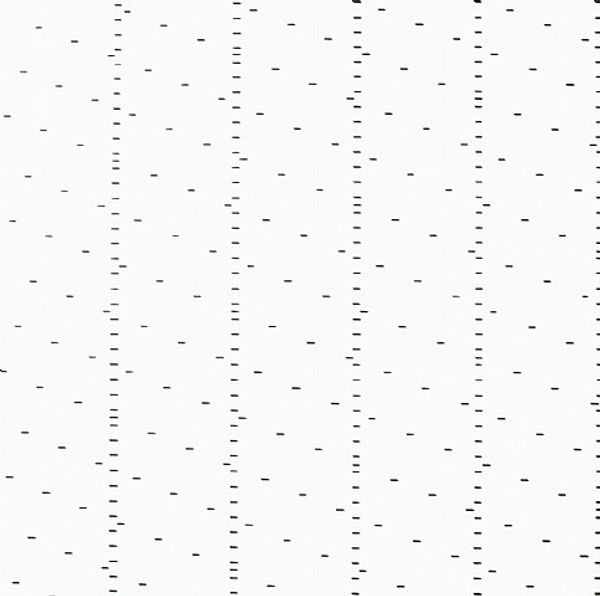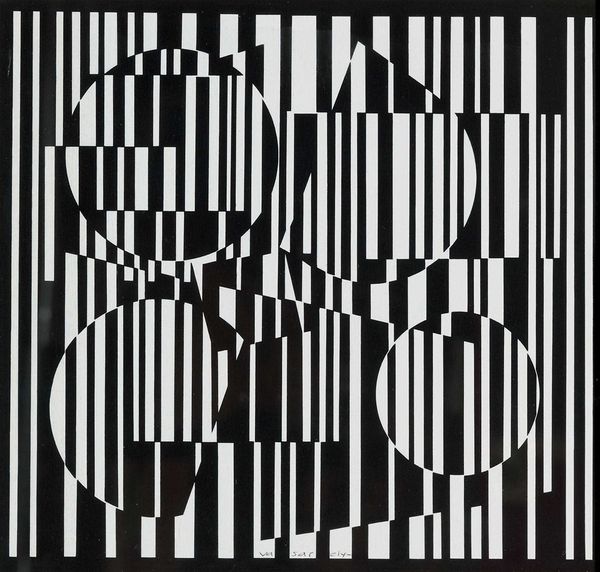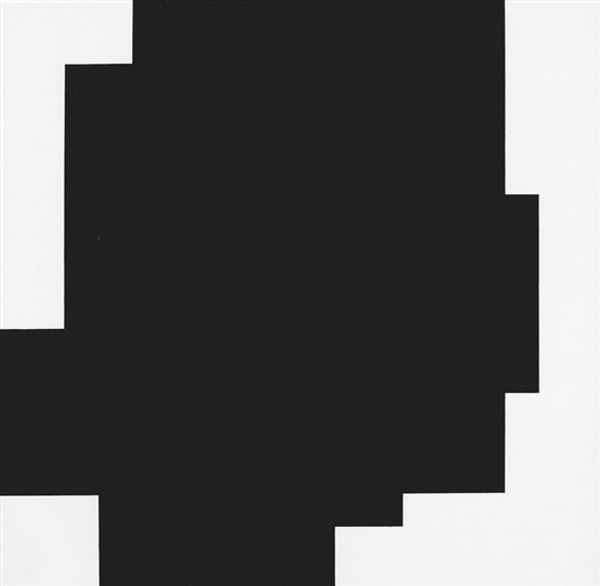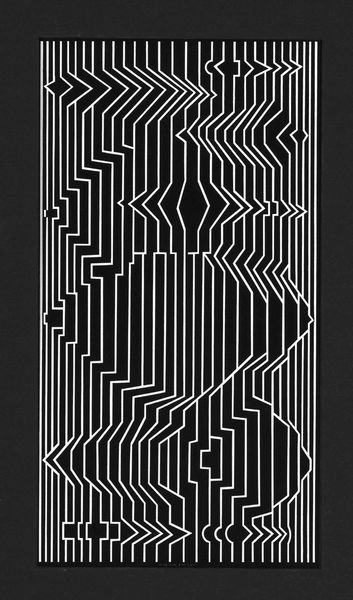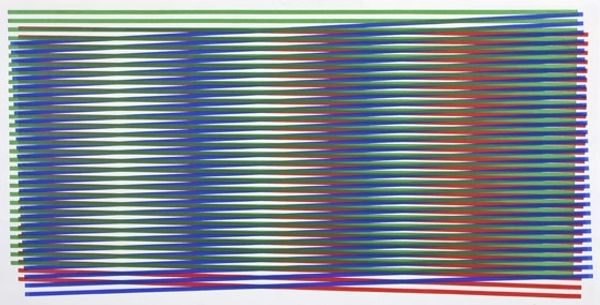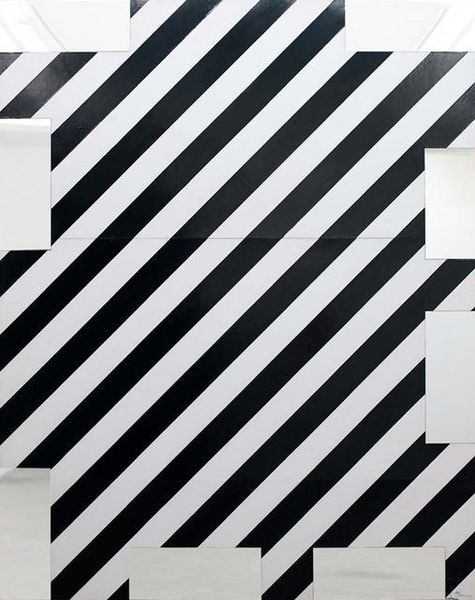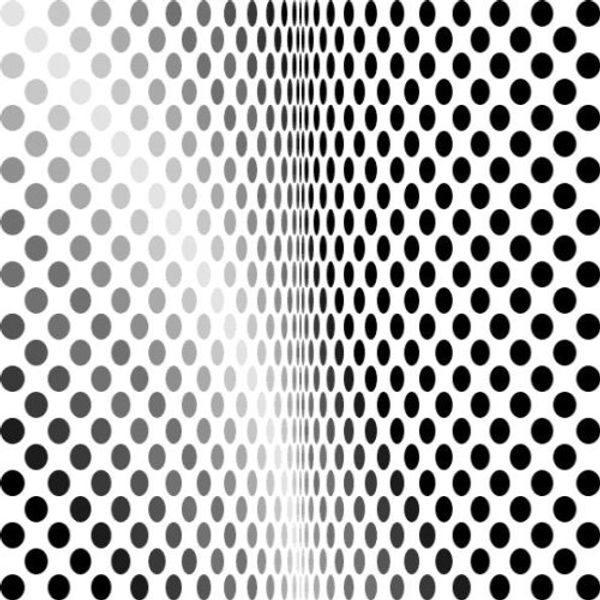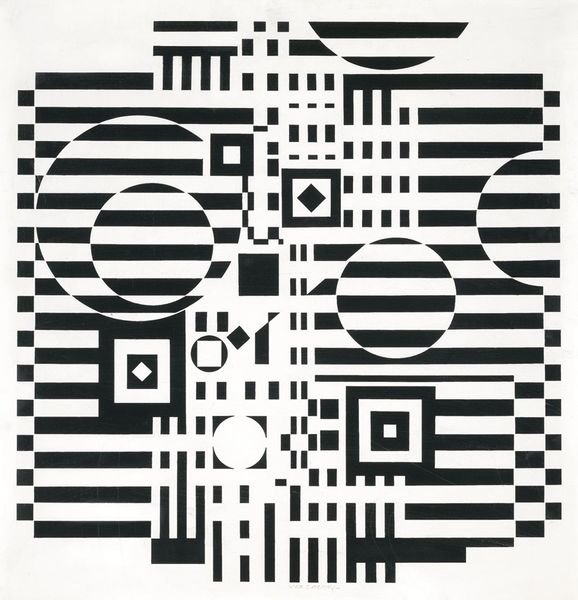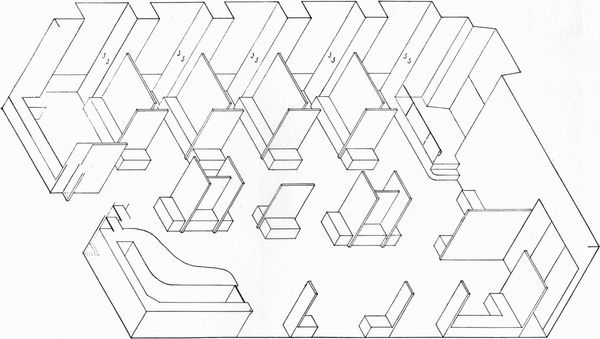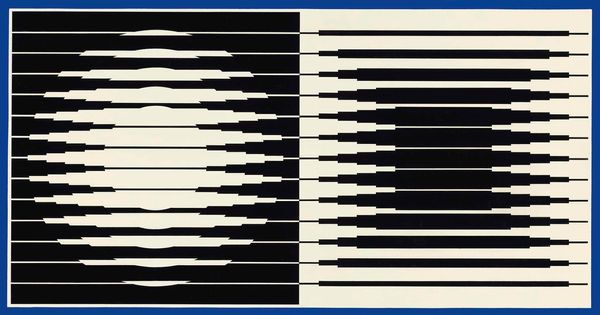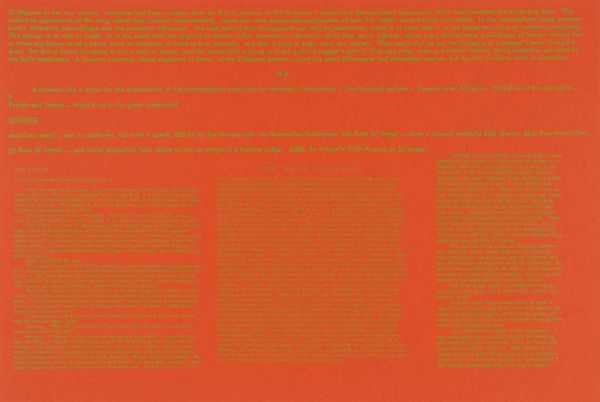
acrylic-paint
#
op-art
#
op art
#
acrylic-paint
#
geometric
#
line
#
modernism
Copyright: Modern Artists: Artvee
Curator: Before us hangs Victor Vasarely's 1957 piece, "Leyre-Hor," rendered in acrylic. Its geometric forms immediately command attention. Editor: It looks like a visual puzzle. Those contrasting black and white lines...they seem to vibrate! Is there something Mayan about the symbolic geometry at work? Curator: Possibly! Vasarely's engagement with Op Art really comes through. He wasn’t just creating patterns; he was crafting optical illusions. The very process demands precision, each line and form carefully placed to achieve the desired effect. Think about the production aspect: carefully chosen acrylic to give sharpness to those contrasting lines. Editor: The shapes arranged remind me of pictograms—a stylized face or a hidden message rendered in an abstract symbolic language. There's something archaic about it. Curator: Absolutely, and while that can be one interpretation, let’s remember the historical context. The mid-20th century was an era obsessed with technology and industry, so in line with those shifts in societal attitudes, this composition can be seen as a reflection of modern ideas where production and its inherent materiality takes center stage. It is the work of a craftsman even when the artwork depicts an industrial sensibility. Editor: Yes, and maybe that’s where the visual tension originates – the dance between industrial precision and the evocation of primordial symbols. Look at how these lines could also represent pathways. It's compelling how the work makes you ask these questions of ancestry while appreciating the construction, line-by-line. Curator: Indeed. By playing with perspective and form, Vasarely coaxes us into actively participating in seeing. It challenges the notion of art as passive object. The materials themselves dictate certain constraints to the possibilities of representation but within those parameters, Vasarely unlocks another level of potential in art making. Editor: In closing, "Leyre-Hor" demonstrates how what appears starkly modern may be deeply rooted in art's ongoing conversation with itself. Curator: It’s an intriguing visual experience, leaving you considering the relationships between process and perception, and whether the art is truly complete until the observer interacts with the canvas.
Comments
No comments
Be the first to comment and join the conversation on the ultimate creative platform.
